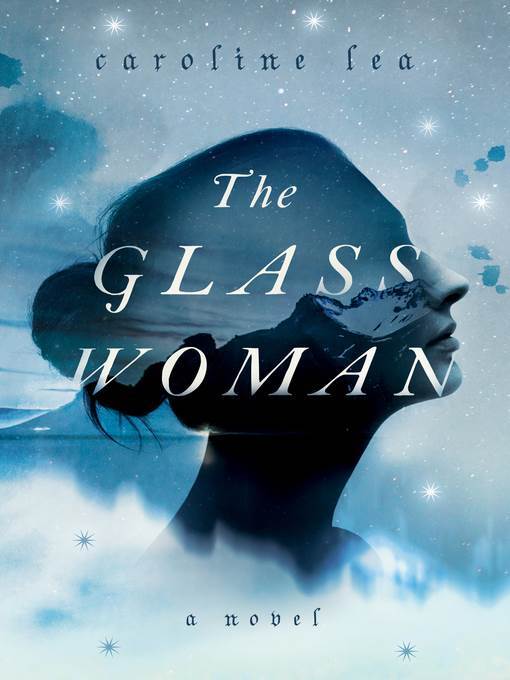
The Glass Woman
A Novel
کتاب های مرتبط
- اطلاعات
- نقد و بررسی
- دیدگاه کاربران
نقد و بررسی

July 1, 2019
A young woman caught in a loveless marriage faces dangers real and imagined in 17th-century Iceland. The second novel by Lea (When the Sky Fell Apart, 2016) follows naïve young Rósa, who marries Jón, the rich but troubled leader of a village many miles from her home, in order to provide for her sick mother. Once installed in his home, she labors alone for most of the day with housework and is often deserted by Jón at night. Shunned by most of the villagers, she is befriended by a couple of the older women, who overcome their fear of Jón to teach her about life in the village between the sea and volcanic mountains and tell her disturbing stories about the sudden death of Jón's first wife. When Rósa hears strange noises from a locked attic at night, she starts to wonder how safe she is. The book is charged with the dark energy of the Icelandic Sagas and the country's bleak proverbs, which provide epigraphs for its chapters. Lea effectively communicates the isolation and dangers of the landscape in which the story unfolds as well as the tension between Christianity and the Nordic religion it attempts to supercede. Written primarily from Rósa's point of view, the novel also occasionally shifts to Jón's. While some readers may find the novel slow going and may chafe at a romantic subplot involving Rósa's too-good-to-be-true childhood sweetheart, who follows her to her new home, Lea uses an unusual setting to good effect, amplifying the impact of both an alluring but hostile landscape and a closed society on a vulnerable young woman. Without diminishing the mythic impact of the novel, she closely and sensitively examines the more ordinary psychological challenges her characters face. A haunting novel delivers chills.
COPYRIGHT(2019) Kirkus Reviews, ALL RIGHTS RESERVED.

July 22, 2019
Lovely prose and the lulling feel of escape into another time and place help to balance the slow pace of this story of 1686 Iceland from Lea (When the Sky Fell Apart), in which religion has replaced witchcraft, and a young woman teeters between the Church and pagan beliefs. At 25, Rosa agrees to marry a surly bear of a man, Jon Eiriksson, the “bonoi,” or community leader, of a nearby settlement. Jon collects taxes from his village, and Rosa knows he will provide for her ailing mother. Rosa travels for four days from Skalholt to Stykkisholmur to live with Jon in an Icelandic turf house perched above a seaside village, where the inhabitants fear Jon and gossip suspiciously about his first wife Anna’s death from a mysterious illness. Rosa is isolated when Jon works his farmland or fishes at sea, and because she wonders if Anna may have died from loneliness, Rosa dares to go against Jon’s wishes to seek companionship with the locals in Stykkisholmur, but she makes few friends. Mystery and potential danger linger throughout as the story builds to the reveal of what happened to Anna, but the escalation is so gradual that it’s near excruciating. Still, with its dreamy prose, Lea’s novel will satisfy readers who wish to be submerged in the ways of an old world.

August 23, 2019
The prolog sets the tone of this novel set in 17th-century Iceland. A frozen corpse rises from the icy sea while suspicious villagers stare in horror. After her father's death, Rósa's only hope of helping her ailing mother survive winter is marrying Jón, a prosperous trader. In his croft near the sea, Jón forbids Rósa from interacting with anyone in his village. But she can't ignore rumors about his first wife's death, mysterious sounds from the locked attic, and hostility from the local pastor determined to replace ancient beliefs in runes and sagas with harsh Christian precepts. The reappearance of Jón's first wife reveals shocking secrets and adds to the mounting violence, betrayals, and death. Chapters of Jón's and Rósa's recollections supply details from their pasts, but the major events occur as winter closes in and makes self-preservation paramount. There are a few glimmers of hope: a village woman's support for Rósa; Jón's bond with his companion, Pétur; Rósa's love for a man from home. Lea's (When the Sky Fell Apart) strongest achievement is her sustained portrayal of isolation, superstition, and fear among hardened people in a harsh environment. VERDICT Readers with a high tolerance for terror and despair or an interest in Icelandic history and lore are the most likely audience for this dark novel.--Kathy Piehl, Minnesota State Univ. Lib., Mankato
Copyright 2019 Library Journal, LLC Used with permission.

August 1, 2019
Growing up in a small village in seventeenth-century Iceland, young R�sa has a good life. Unlike other girls, she is educated and spends her days reading and writing. Her childhood friendship has matured into young love, and R�sa is happy. But everything changes when her father suddenly dies, and R�sa and her mother find themselves living in poverty. In order to help her ailing mother, R�sa makes the difficult decision to sacrifice her happiness and marry J�n Eir�ksson, a mysterious and rich stranger, and is swiftly torn away from all she knows. Isolated in her new home in a strange village by the sea, R�sa is locked out of rooms, hears ghostly noises, and feels an unnerving shadow cast over her. As she unravels the secrets surrounding her husband, she must learn whom to trust in order to survive. Lea (When the Sky Fell Apart, 2016) crafts deeply intriguing characters while bringing to life their harsh landscape. Full of emotion, mystery, and suspense, this unique love story will keep readers guessing until the very end.(Reprinted with permission of Booklist, copyright 2019, American Library Association.)

























دیدگاه کاربران